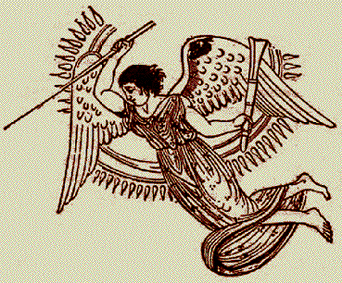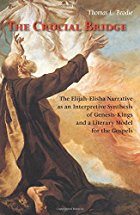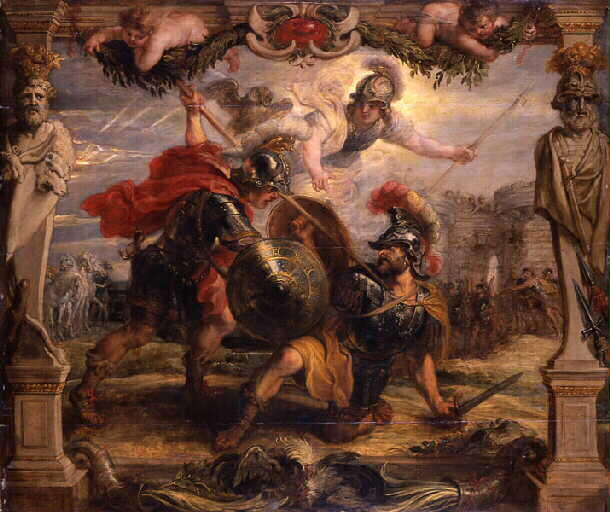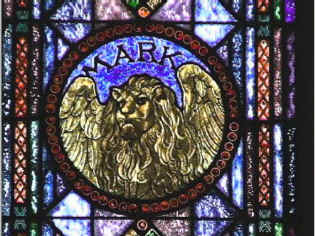It is an axiom among fundamentalists and even many mainstream conservative Christians that Psalm 22 contains an incontrovertible prophecy of the crucifixion of Jesus, and that the key verse establishing this “fact” is the one that reads: “They pierced my hands and my feet” — Psalm 22:16
There is no doubt that two of the gospel authors took the first verse of this Psalm — “My God, my God, why have you forsaken me?” — and placed it in the mouth of Jesus on the cross. All four gospels used the 18th verse too, which says, “They divide my garments among them, and for my clothing they cast lots.” And one drew on the mocking: “All those who see me laugh me to scorn . . . saying, He trusted in the Lord, let him rescue him, let him deliver him, since he delights in him!” (22:7-8 )
All of these verses are found in the gospels as part of the crucifixion scene:
And when they crucified him, they divided his garments, casting lots for them . . . . (Mark 15:24; Matt 27:35; Luke 23:34; John 19:24)
And at the ninth hour Jesus cried out with a loud voice, saying, “. . . . My God, my God, why have you forsaken me?” (Mark 15:34; Matt 27:46)
Likewise the chief priests, also mocking with the scribes and elders, said . . . . “He trusted in God; let him deliver him now if he will have him, . . . .” (Matt. 27:41-43)
Is it not strange that the verse in that same Psalm that says “they pierced my hands and my feet” should not be used at all in any of the gospels? This verse, after all, is the one singular verse that would establish that it is speaking, at the very least metaphorically, of a crucifixion. Yet it is totally absent from the gospels. There is not even any narrative detail that makes special mention of nails going through the hands and feet of Jesus at the time he is being crucified. (The closest any gospel comes to this is at the time of the resurrection when Thomas refers to nail-prints in Jesus’ hands. But there is no whiff of allusion to the Psalm.)
The rest of Psalm 22
But one might as well ask, Is it not strange that the Psalm spoke of hands and feet being pierced (presumably a crucifixion image) at all? Such a verse does not sit well at all with the rest of the Psalm. The psalmist begins with a cry to God and a complaint that he has been uttering that cry for days and nights without an answer:
My God, my God, why have you forsaken me? . . . . I cry in the daytime, but you do not hear; And in the night season, and am not silent. (22:1-2)
Jesus was not on the cross for days and nights, and the Gospel of Luke informs us that God certainly heard the prayer Jesus uttered the previous night. He sent an angel to help bolster his courage. Yet this Psalm opens with a cry that is the desperation felt from having no answer for, at the very least, a whole day and night.
This cannot be reconciled with the crucifixion scene of the gospels.
Then there is the verse that says the Psalmist was attached to God from the time of his birth.
From my mother’s womb you have been my God (22:10)
That surely must raise some eyebrows among those who believe that Jesus was, and knew he was, part of the Godhead from eternity. But it gets worse for those who assume this Psalm is depicting a man on a cross:
Be not far from me, for trouble is near . . . (22:11)
Um, yes. A person nailed to a wooden stake to die a slow agonizing death cries out, “I see trouble up ahead”?? Now that is an optimist. Always thinking that no matter how bad the present situation it could always be worse. “Please God, I can handle you deserting me at this moment, but I do hope you hurry up and come to help me when I’m in real trouble!”
Then there is that strange plea to be saved from the sword!
Deliver me from the sword . . . (22:20)
Always worth remembering to ask God to deliver you from a sword when he lets you experience the niggling inconvenience of being crucified.
So the broader context of the Psalm speaks against it being a foretelling of a crucifixion.
But there is metaphoric imagery throughout that also needs to be appreciated to understand it fully. Wild animal imagery dominates.
Many bulls have surrounded me;
Strong bulls of Bashan have encircled me.
They gape at me with their mouths,
As a raging and roaring lion.
For dogs have surrounded me
Deliver . . . my precious life from the power of the dog.
Save me from the lion’s mouth
And from the horns of the wild oxen!
It is not surprising therefore to find that the Hebrew Bible contains a passage with the same wild lion imagery that happens to be missing from a Greek text of this Psalm that was preserved and copied by a later generation of Christians:
Like a lion they are at my hands and my feet
In place of this Hebrew verse the Greek translation of this Psalm (which has been the work of Christian, not Hebrew, scribes) reads: “They pierced my hands and my feet”. “Pierce” has replaced “Like a lion”.
“like a lion” or “pierced”?
How could that have happened? A Rabbi Singer on the Outreach Judaism site writes:
The word kaari, however, does not mean “pierced,” it means “like a lion.” The end of Psalm 22:17, therefore, properly reads “like a lion they are at my hands and my feet.” Had King David wished to write the word “pierced,” he would never use the Hebrew word kaari. Instead, he would have written either daqar or ratza, which are common Hebrew words in the Jewish scriptures. . . .
Bear in mind, this stunning mistranslation in the 22nd Psalm did not occur because Christian translators were unaware of the correct meaning of this Hebrew word. Clearly, this was not the case. The word kaari can be found in a number of other places in the Jewish scriptures. Yet predictably, the same Christian translators who rendered kaari as “pierced” in Psalm 22 correctly translated it “like a lion” in all other places in the Hebrew Bible where this word appears.
For example, the word kaari is also found in Isaiah 38:13. In the immediate context of this verse Hezekiah, the king of Judah, is singing a song for deliverance from his grave illness. In the midst of his supplication he exclaims in Hebrew. . . . . [Hebrew text missing here]
Notice that the last word in this phrase (moving from right to left) is the same Hebrew word kaari that appears in Psalm 22:17. In this Isaiah text, the King James Version correctly translates these words “I reckoned till morning that, as a lion . . . .” As I mentioned above, Psalm 22:17 is the only place in all of the Jewish scriptures that any Christian Bible translates kaari as “pierced.”
Greek translations of the Hebrew scriptures
Among those who know a little of the Greek Old Testament known as the Septuagint such an explanation seems problematic. Did not the Jews themselves translate their Hebrew scriptures into Greek long before the Christian era? Yes they did, but according to legend gleaned from the letter of Aristeas and the preface of Josephus to his Antiquities, only the Torah, the Pentateuch, that is, the first five books of Moses. Singer in the same article referenced above also cites the Talmud, Jerome and the 12th book of Antiquities.
The broader context of the setting of the Psalm as discussed above is strong evidence in support of this. A verse speaking of a literally crucified Psalmist simply would not make any sense in the context of the other verses.
The first appearance of “they pierced my hands and feet”
Christians first began to use this Greek translation after our gospels were written. Justin Martyr refers to this passage (they pierced my hands and feet) in his Dialogue of Trypho, paras 97 and 104. The Gospel of Peter likewise appears to know of it. At least it says explicitly narrates a scene where nails are being pulled from Jesus’ hands. (It is possible, of course, that this is taken from the allusion to the nail prints in the hands of Jesus in the Gospel of John — which also may have been written much later than the other gospels.) Whatever the case with this gospel, it is clear that the earliest indisputable knowledge of this Greek text of Psalm 22:16 is from the mid-second century with Justin Martyr.
It appears that some time between the time the canonical gospels were written and the time of Justin Martyr, this famous “prophetic” verse was introduced in a Greek translation of the Psalms by Christian scribes.
Like this:
Like Loading...


 Continuing from the
Continuing from the 
 Thomas L. Brodie presents an argument that the Gospel of Mark was in its basic outline, plot and structure based on the Elijah-Elisha narrative in the Old Testament. I am not quite sure what to make of his case at times, but cannot deny its interest. I have no problem accepting that Mark used some of the miracle stories from Elijah and Elisha as templates for his Jesus miracles, but Brodie goes much further than this. His book is
Thomas L. Brodie presents an argument that the Gospel of Mark was in its basic outline, plot and structure based on the Elijah-Elisha narrative in the Old Testament. I am not quite sure what to make of his case at times, but cannot deny its interest. I have no problem accepting that Mark used some of the miracle stories from Elijah and Elisha as templates for his Jesus miracles, but Brodie goes much further than this. His book is 




